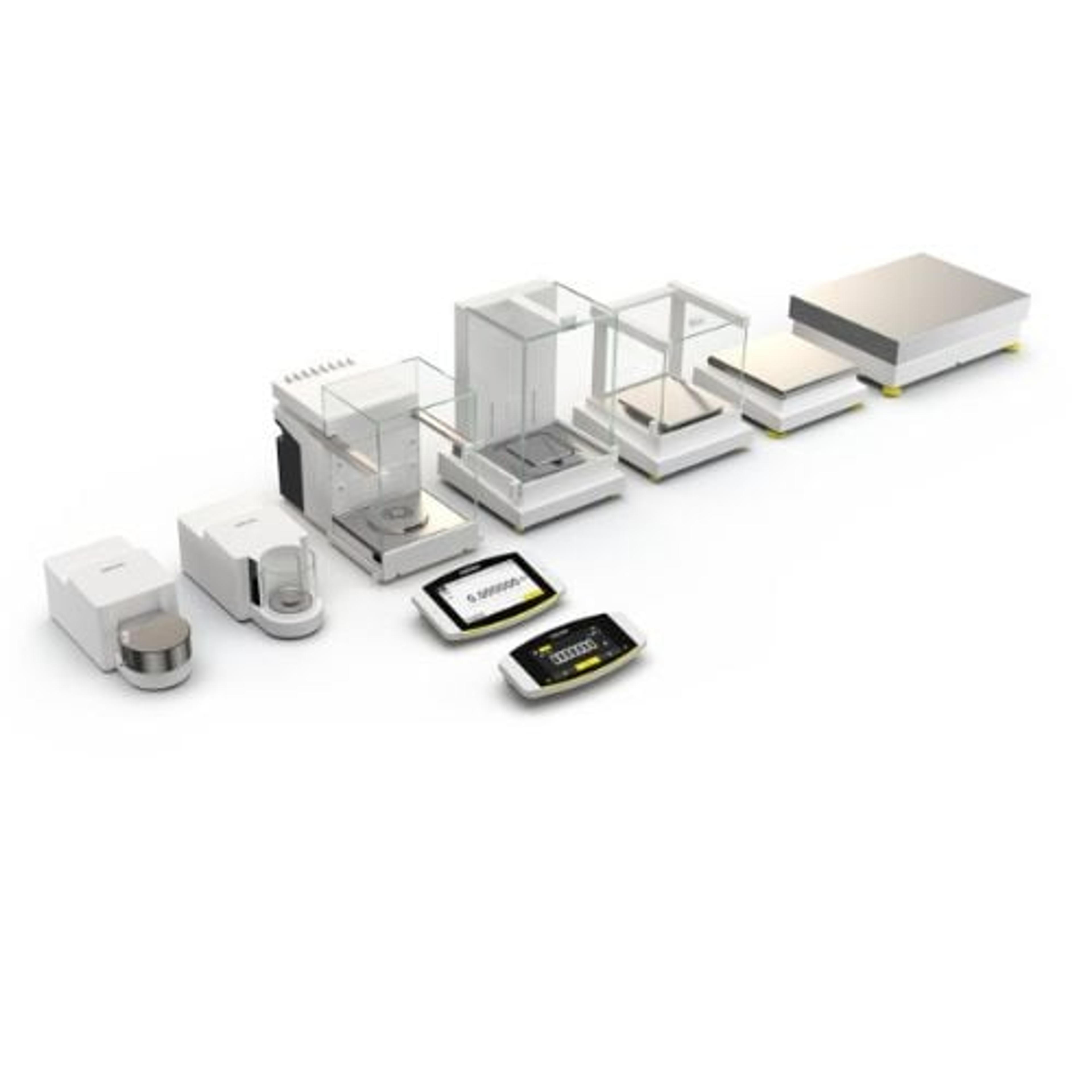Ensuring data integrity: How audit-proof digital solutions offer an easier route to lab digitalization
As a growing number of organizations look to digitalize, we learn what it takes for labs to stay competitive, compliant, and flexible
6 Apr 2022
Ongoing advances in automated technologies and digital science solutions are helping labs achieve unprecedented levels of throughput, efficiency, and reproducibility. As organizations evolve and adjust to keep up with these advancements, making sure data and processes are compliant is essential, particularly in today’s highly regulated life science, biopharma, pharmaceutical, and food industries. Violation of data integrity standards can not only impact decision-making but also have serious consequences for human health and safety.

In this article, we speak with experts Sebastian Weber and Mitesh Chhana, from Sartorius, to learn more about the most common data integrity violations, how to avoid them, and what instrument features to look for to maximize the benefits of digital transformation.
Why is data integrity important?
SW: Companies operating in regulated environments including life science, biotech, and pharma industries are investing more and more in digital solutions, such as electronic lab notebooks (ELN) and laboratory information management systems (LIMS). This comes from a desire to connect instruments to these systems and create paperless data, which can streamline processes and increase efficiency.
As important decisions are made based on these data, which also affect the safety and quality of drugs, measures must be taken to ensure that the data are correctly recorded, maintained, and shared. That can be ensured by following the data integrity principles.
MC: In many labs, the process of recording scientific data is still transitioning from writing results down manually to printing, to fully electronic. If not implemented correctly, relying upon manual methods, or a hybrid that includes electronic data entry can greatly increase the chances of data breaks that lead to both poor reproducibility and lower product quality, from academic research to manufacturing.
Electronic data integrity enables users to have seamless data transfer, with audit-proof visibility. In fact, auditors are now calling for wider adoption of electronic data due to its better security – and this links to a growing movement towards complete lab digitalization in many scientific areas.
How is data integrity assessed?
SW: Data integrity requires that data be complete, accurate, consistent, and in context to have complete confidence in the end results. To achieve this, companies should follow the ALCOA principles.
MC: From an audit perspective, a Good Manufacturing Practice (GMP) audit can’t simply take a result for a given sample or batch without any of the other metadata that's associated with it. If you cannot trace the complete data back to the start of the process, you cannot ensure a good product has been produced.
What are some of the most common data integrity violations?
SW: You find the most common violations in FDA warning letters, and many labs experience the same problems with data integrity. Many of the violations involve user roles and access management. For example, if everyone in a company uses a universal administrator account, you can’t trace which user generated the data. In addition, a universal account may have administrative rights, making it very easy for any user to change or manipulate data when deleting results or making system changes.
Another common area of violation concerns audit trails. Every event that happens on an instrument, such as setting up a new user or changing a parameter, should be documented in an audit trail to produce a complete account of traceability. We quite often find that software or instruments in pharmaceutical companies, for example, have an incomplete trail that doesn’t cover all events that happen on the instrument, or the audit trail is switched off.
MC: Violations can also occur when inputting data by hand into a LIMS or an ELN. A simple transcription error can cause huge problems, including nonconformance to audits. This is why laboratories are pushing for digitalization, to try to eliminate human error.
What can be done to prevent these data integrity violations?
SW: First of all, you must make sure the instrument or software you’re using provides all the features you need to be compliant with the FDA 21 CFR part 11, or in Europe, the EU GMP Annex 11. This includes an audit trail capability, user and role management with personalized accounts, as well as an electronic signatures feature if you want to work completely paperless.
Having safe and seamless data transfer when integrating instruments into software systems is also very important. Data from an instrument should always be automatically transferred to avoid human input errors and manipulations. A nice side effect of this is that it also increases efficiency in the laboratory.
MC: As well as ensuring compliance with regulatory requirements, digitizing data solutions offers numerous efficiency and time-saving benefits. For example, before electronic technology was available to document data, users would need a second signature from a team leader or lab manager to sign off the data, and this could take a lot of time. Now that everything is documented electronically with e-signatures, you don’t need a second person, while automation capabilities can further bolster workflow efficiency.
What are the ALCOA principles?
SW: ALCOA is an acronym that provides a framework to achieve data integrity. It can be used for both paper and electronic-based records, but it is much easier to follow when using electronic data.
ALCOA means the data should be:
• Attributable - Results are recorded with their associated metadata so that you can see directly who performed an action, on which instrument, using which method, and when
• Legible - The data recorded must be readable and permanent
• Contemporaneous - Data should be recorded the moment that they are generated
• Original - Understanding where the original data is generated to ensure content and meaning are preserved
• Accurate - Ensuring your data is error-free, and that if there was an error, the correction is documented
How can instrument design help to prevent data integrity deficiencies?
SW: A very good example is our Cubis® II balance, which is designed to conform to the ALCOA principles. As a result, compliance can be achieved without interrupting workflow or adding additional workload.
MC: As well as weighing samples to a global leading performance level, the Cubis® II enables data to be recorded and archived in a way that users can trust is audit-proof. Key features including audit trails, alibi memory, access control, user management, e-signatures, data backup, and time synchronization, all work together to allow customers to achieve regulatory goals and enable flexible integration into existing data systems.
SW: One of the major advantages of the Cubis® II is that there is no middleware needed to integrate it into an IT laboratory infrastructure. Due to its seven-inch touch screen, it can be used as a tablet, without the need for having a separate computer, and this centralized system allows the instrument to be seamlessly and easily integrated into existing IT systems.
The instrument has the ability to connect directly to a company's active directory and use this for user management. This makes it very easy for both users and administrative staff, as users are managed centrally and do not have to remember an additional password for the balance.
The same features also enable the balance to be integrated into higher-level systems like LIMS or an ELN system. Here, there are several different kinds of connections available, including simple serial connection or transfer of PDF and CSV files but also web server connectivity with wireless, or ethernet.
What should you consider when looking to buy a new instrument?
MC: In this modern digital era, we need to consider efficiency. Today’s regulated environments are very competitive, and there is no room for laborious, arduous, and time-consuming ways of documenting data. Companies are always looking to improve efficiencies, and this is where systems such as the Cubis® II are invaluable.
Whether producing pharmaceuticals or fine chemicals, building batteries, or bringing vaccines to market, it's not just a case of compliance, it's also efficiency that can really impact routine work, from R&D to commercial production. Companies that are ahead of the curve and already using electronic systems and digitalized data have a competitive edge over those that are still using paper-based data.
SW: We are just seeing the start of the digital transformation, and every company has a different digitalization strategy. Therefore, one of the things to consider when buying a new instrument is to make sure it aligns well with both your immediate needs and those in the future, as your company progresses through its digital journey.
What do you see for the future of this area?
SW: The integration of numerous instruments into workflows to complete an overarching goal will become more and more important. This will enable compliance to be achieved throughout the entire workflow and also greater efficiency through automation, preventing the need to transfer data manually between instruments.
A good example of this is the partnership we have already with Metrohm. We now have a fully compliant digital solution for Karl Fischer titration, which will be expanded in the future to aid other overarching workflows.
MC: Across multiple industries, especially those that are highly regulated, we’re seeing a growing number of companies embarking on digitalization projects involving paperless labs, workflow automation, and personalized electronic devices. This is very much where the industry is headed.
I envisage almost everything being electronic within the next five to 10 years. It’s going to require a lot of investment, and lab managers will face many decisions on this journey. This is where Sartorius is on hand to offer flexibility and solutions to complement whatever data strategy our customers pursue.
Learn more about data integrity and connectivity for lab instruments in this webinar >>
Ensure your weighing practices are CFR Part 11 compliant using this checklist >>

